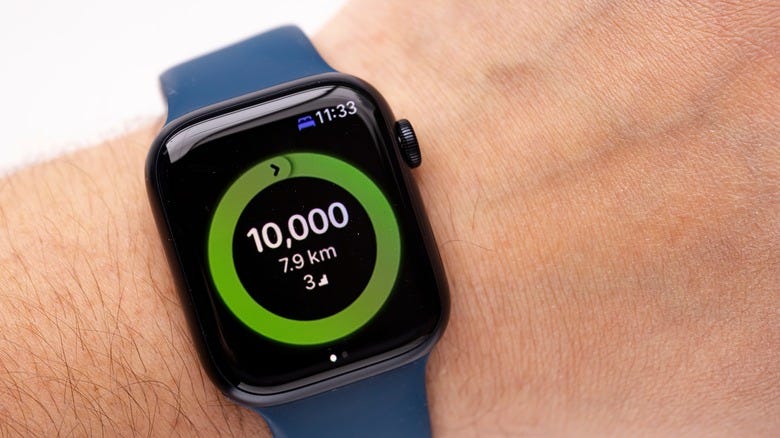Adding Cardio For The Initiated
Level 1: 7500 Steps Per Day
Most people don’t like running because they don’t have a solid aerobic base. If you’re one of those people then go to the walking section before you read this.
I have heard “my knees hurt when I run”, “I wasn’t built to run”, “I don’t enjoy it, it’s not fun”, “I don’t want to lose muscle”.
What I say to that:
Buy actual running shoes, research the ones best for you. I have an entire newsletter dedicated to this topic. You’re old beat up sneakers will only cause you pain.
You have an Achilles tendon and a hamstring, you were built/born/evolved to run & travel long distances. Us bipeds are more resilient on our feet than you can imagine.
You’re running too fast because you think you’re running the grade school mile and need to go all out. It’s time to roll it back and slow down, the race day PRs will come, but be patient.
You wont lose muscle. The only ones losing muscle are the elite to sub-elite runners who run sub 2:30 in the marathon. Until then, don’t be surprised if you’re still throwing up your normal weight on the bench while being able to run longer distances than you previously imagined. Your normie gym friends will be in awe, and you will be an entire league above them.
So you have a solid base on your legs, you’re hitting 7,500 consecutive steps per day, but you want to kick it up a notch.
For just starting out as a new runner, I suggest keeping most of your runs in the 70-75% Max HR range.
Referencing the formula for max heart rate being 207 - (.7 * age). If you are 30, aim for a heart rate between 130-150.
As with everything, the above formula is a general rule, and I assume most of you here were once athletes and are of a higher genetic makeup than most. So the one rule that supersedes the above formula is: You should be able to talk to someone when running at your targeted aerobic pace/HR. Find a buddy to run with so you can chat the entire time or call a loved one to get a baseline.
The goal is to find out where your aerobic (with oxygen) threshold is. If you can run at a 9:00 pace and talk completely fine, but when you kick it up to a 8:00 pace that conversation can’t be held anymore, you have found your threshold range.
Running above or just on your threshold and staying in an aerobic state is a guaranteed way to find a runner’s high. It’s counter-intuitive to think that running slower induces a runner’s high, but just trust me here.
A few notes:
If you have never ran before I suggest progressively loading the miles on
Buy proper Running Shoes
Running gains come quick, especially for natural athletes, and you will want to open to turn the jets on, but I advise you to slow down when possible.
Run for time. Miles per week/month are a great benchmark to stay on track but time is more important. I usually run for 50-60min depending on the day or route I choose. As you run more, add pace as your heart rate drops from becoming more efficient (better cardio).
Training Block 1:
10 Miles Per Week: 2 runs, 5 miles each. Off days, stay to your prescribed walking schedule accompanied by gym.
Run time: 45min at ~9min pace, 70% max HR.
Training Block 2:
15 Miles Per Week: 3 runs, 5 miles each. Off days stay walking/lifting.
Run time: 45min at ~9min pace, 70% max HR.
***This is where you need to decide if you want to sustain 15-20 miles of running a week for fat loss and health benefits alone***
Fork In The Road
Hitting 20-25 miles a week *with no race goal in sight* is where you should be thinking about signing up for you first marathon/race. If you are logging 100 miles a month and living your life normal, congrats your body is probably in the best shape it’s been in years, your lipid panel is on point, and you’re functioning like you’re years younger.
But it’s time to put your new body to use by diving into the addicting world of race running. At first it can be scary signing up for your first marathon, but I will provide the necessary steps in this newsletter to get you over the finish line.
This is where the world of running really opens up, varying distances, speed PRs, qualifying races, travel, tempo runs, long runs, push runs, interval training, nutrition, shoe specs, form, recovery, and much more. It gives me a lot to talk about, which I will be covering extensively in this newsletter.
This article and the previous installment (cardio for beginners) should act as the authoritative starting point for non-runners, where my more advanced running & fitness articles will be coming down the pipeline so drop your email down below.
Best,
BowTiedRunner


